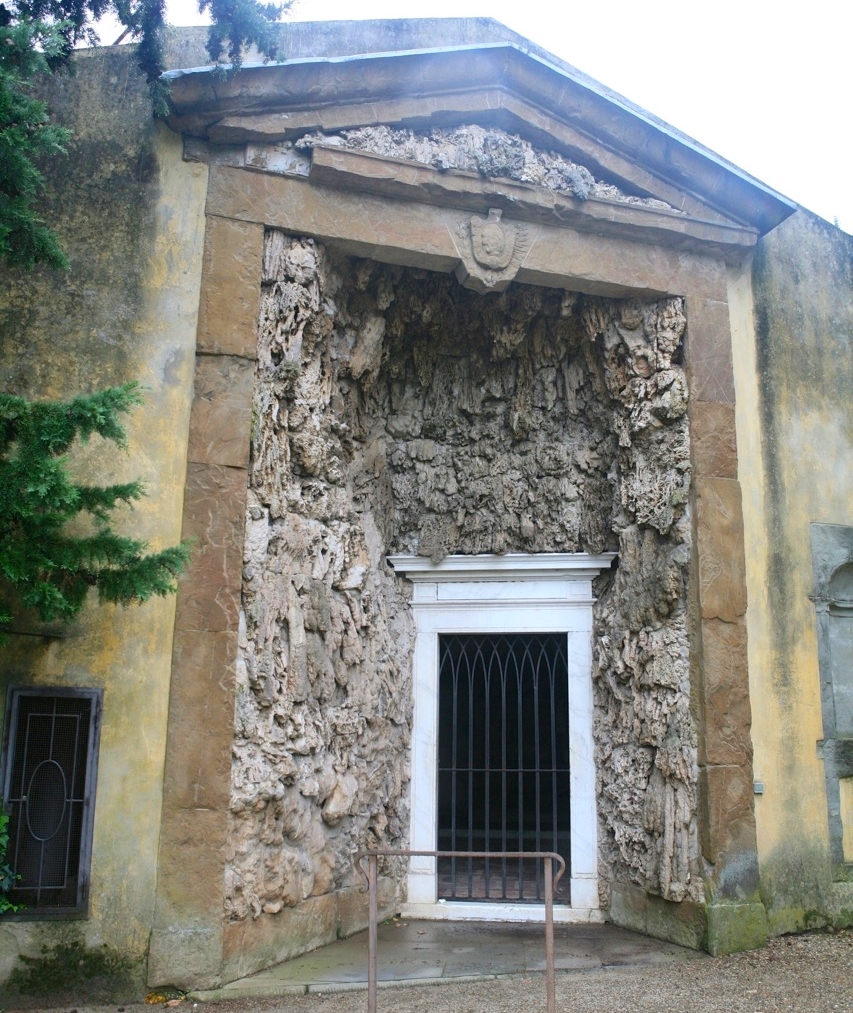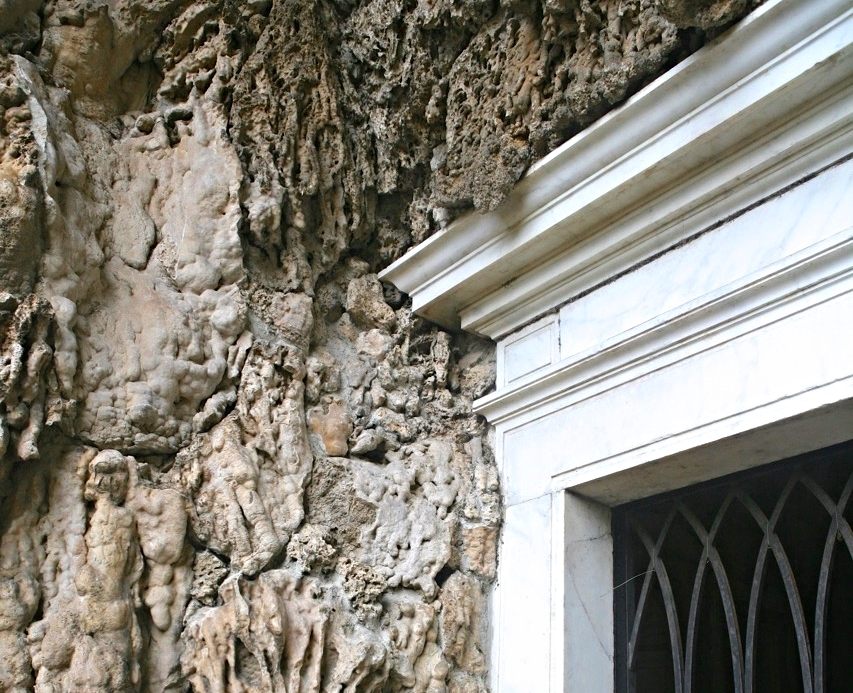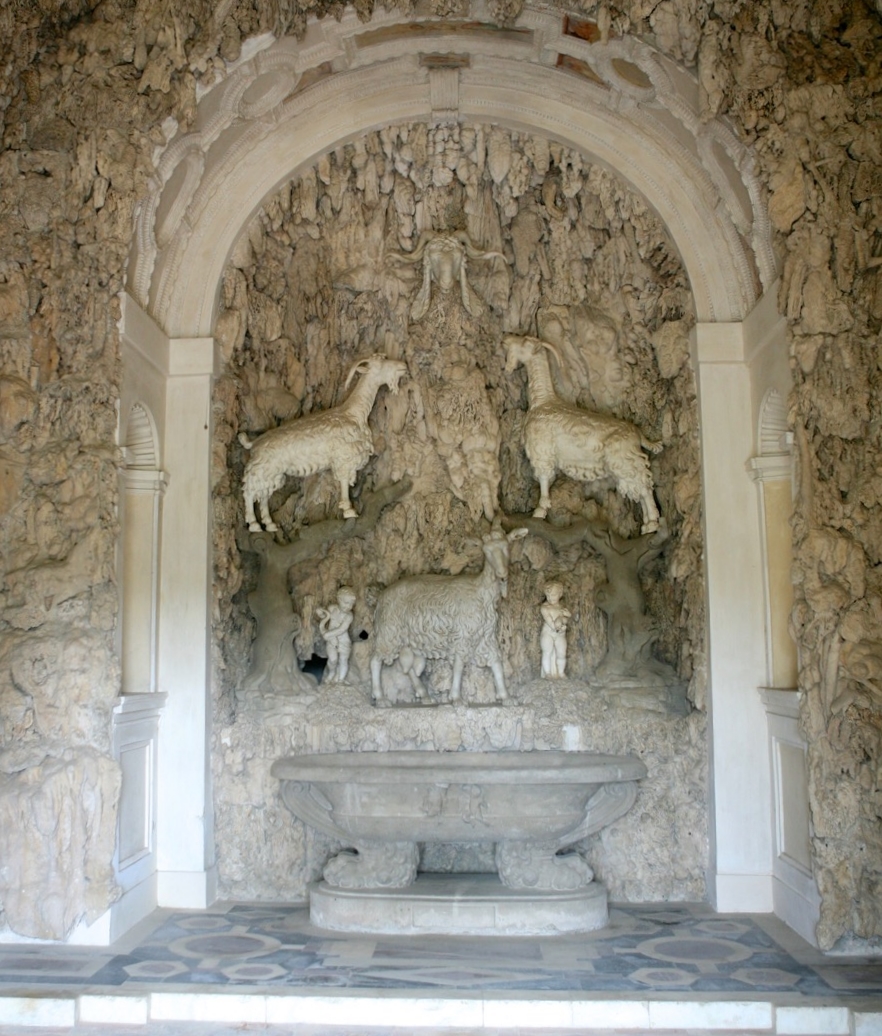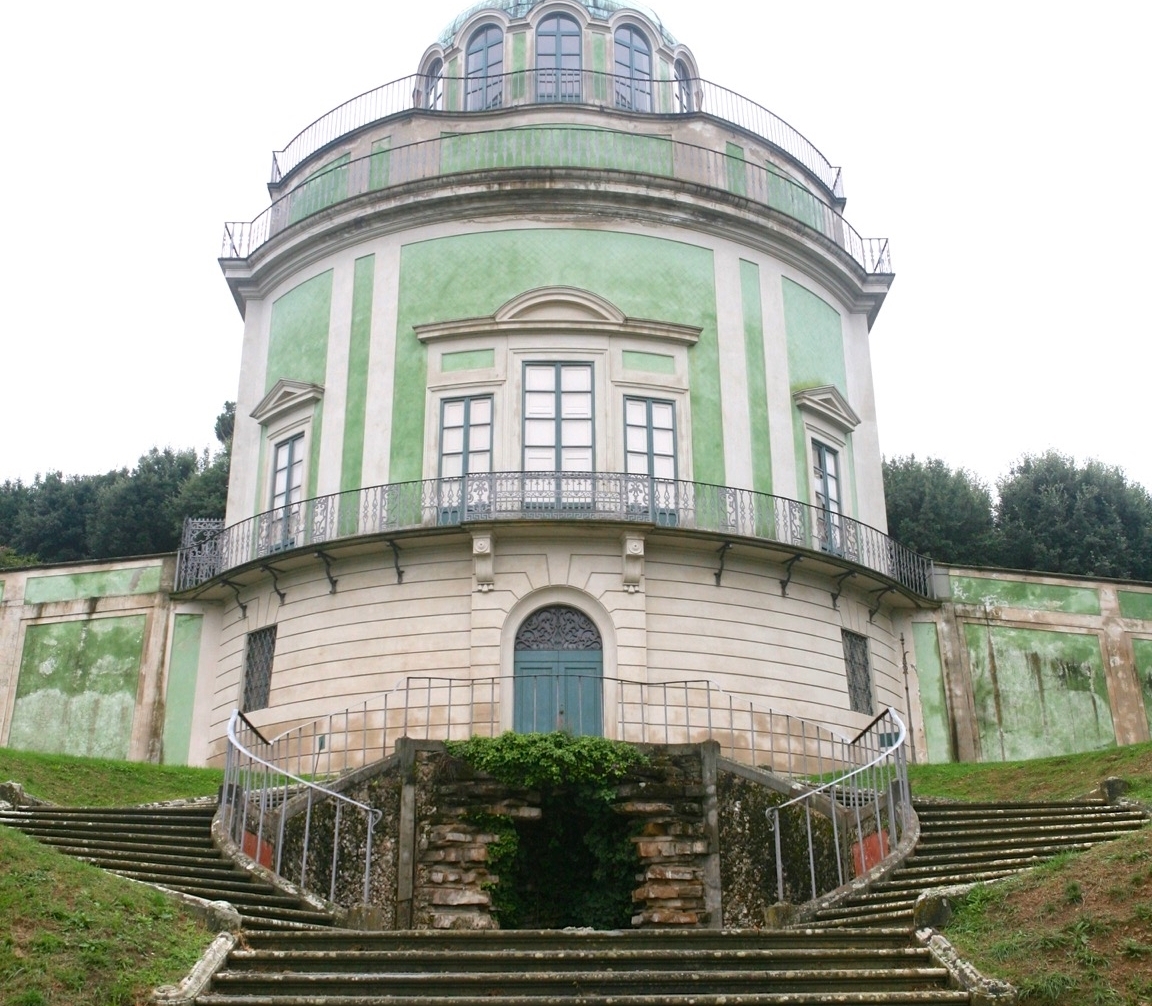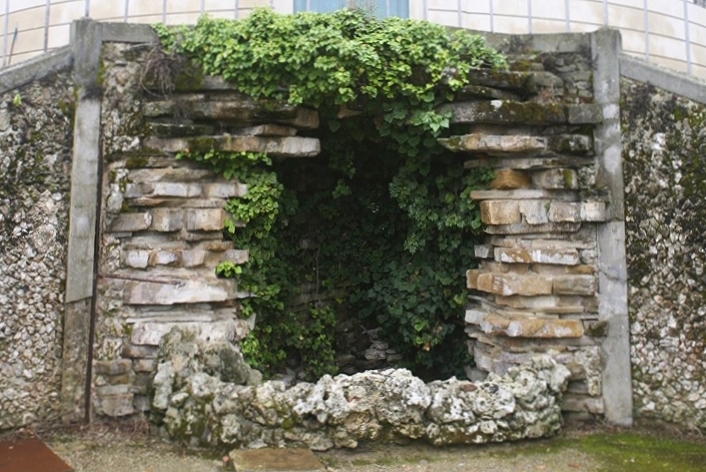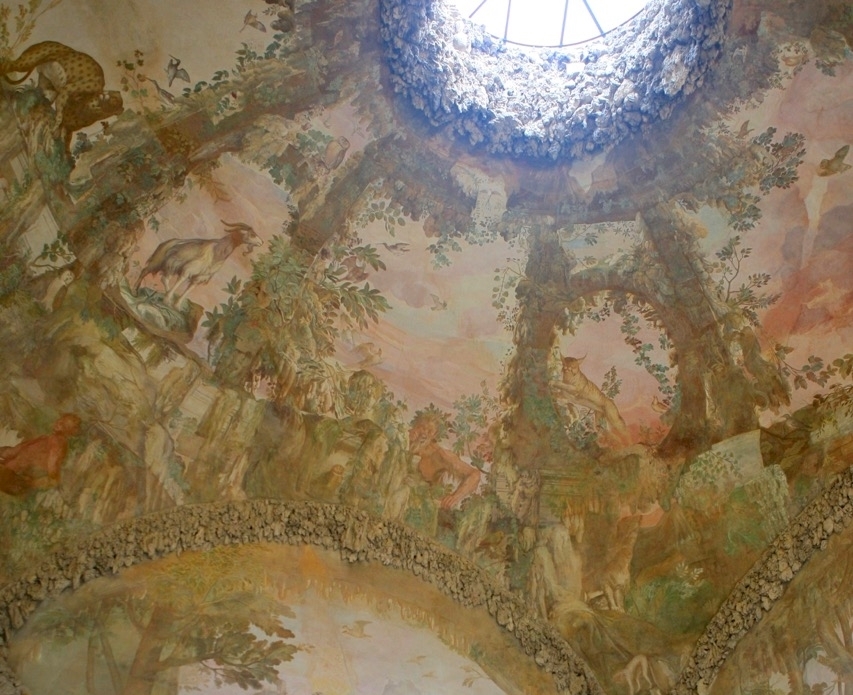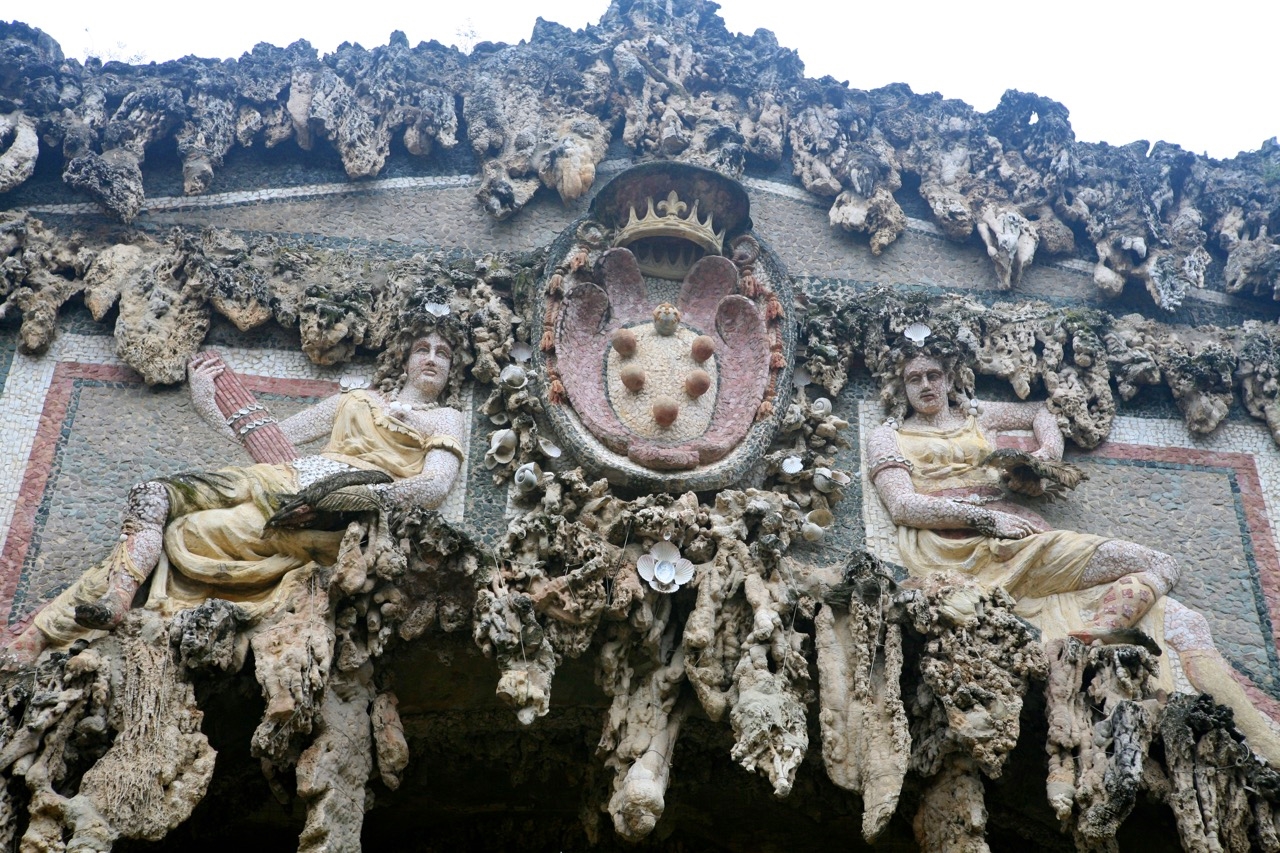One of my favorite features in the Italian garden is the grotto. A grotto is defined as “a small picturesque cave”. Grottos are a key feature of Greek and Roman stories: in Homer’s Odyssey, the man-eating giant Polyphemus lives in a grotto where he keeps his flock at night; in the legend of Seven Sleepers, a group seeks refuge from religious persecution in a grotto; and the Roman sea god Poseidon lives in a sea grotto. Given that the Italian renaissance garden gets much inspiration from classical Greek and Roman culture, it should be no surprise that the grotto also plays a role in Italian renaissance gardens.
Cosimo I and Eleanora of Toledo's Pitti Palace, Florence, Italy.
The grotto provides an element of surprise, a contrast to the more formal geometry of the rest of the garden. Grottos are a destination. They offer practical shelter from spring showers, summer sun, and winter winds. They can also be dark and a bit scary. Because they are protective they enjoy special ornament, sculpture and painted walls that celebrate great legends. Best of all they are a place for luxurious plantings of shade loving plants like ferns and mosses that contrast with the arid summer climate outside. The perfect grotto includes water-bathed walls that add sheen to the space, and a small stream to make soothing water sounds.
The 3 grottos above are from the Boboli gardens at Pitti Palace in Florence, Italy.
These gardens were commissioned by Eleonora di Toledo, wife of Cosimo I de Medici, Grand Duke of Tuscany as a private family garden. Eleonora was from Spain and probably brought ideas from gardens there. The initial plan was made by sculptor Niccolo Tribolo who also designed Cosimo’s country house, Villa Medici di Castello. Tribolo passed away before the Boboli gardens were completed. Architects Giorgio Vasari, Bartolomeo Ammannati, and Bernardo Buontalenti completed most of the work we see today.
Portrait of Eleonora of Toledo by Bronzino, 1544-45. Watch a video about this portrait to learn more about Eleonora.
Subsequent generations of the family added to the expansive.gardens. On the early spring day that I visited Boboli, it mostly rained. So it was the grottos that provided welcome cover as I worked my way through the garden.
My favorite was the smaller grotto of Madama with its beautiful palladian door frame set into what looks like natural rock. Just brilliant to see “civilization” meeting “wilderness.”
The grotto at Kaffehaus, added in the 18th century, was quite intimate with a wonderful view of the garden there.
Grotta Grande by architect Bernardo Buontalenti, 1593.
The most famous grotto at Boboli is Grotta Grande by architect Bernardo Buontalenti. It took 10 years to build and it was completed in 1593. It fills the space of an entire building, and it is divided into 3 sections. The first is painted to look like a natural grotto that an actual shepherd would use, and 2 other rooms, all incorporating a mixture of beautiful classical sculpture and naturalistic rock structures.
Although at first it might seem extreme to add a grotto to a modern day garden, I think that the concept is worth considering. Imagine a relatively small, sheltered space tucked into the garden: a secret hide-out where you can read a book or take a nap.
Though I don’t have space for one now, in the dream garden that I am working on in my mind, I have tucked a small grotto into the far corner of the garden as a special retreat.
Any grotto stories from your garden?

